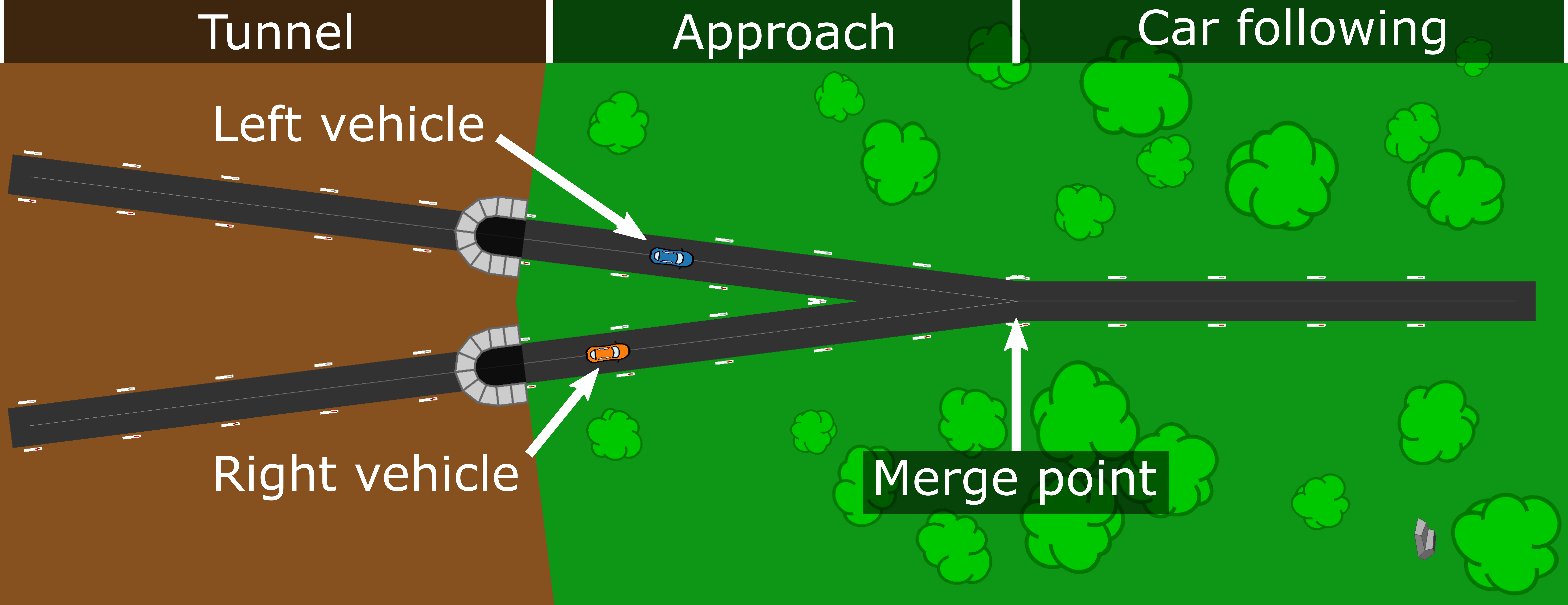Merging like a human: TU Delft develops new model to help self-driving cars drive socially
Scientists at TU Delft have developed a new model that better describes human behaviour when merging into motorway traffic. Current models often assume that drivers are constantly trying to optimise their behaviour to reach their destination as quickly and safely as possible, but this is not always the case, says postdoctoral researcher Olger Siebinga. The new model gives more insight into human interactions on the motorway and can be used to improve autonomous cars.
For many drivers, merging onto a motorway is a routine act, with little thought given to the many factors involved. But it is only when you try to simulate this behaviour in a computer model that you realise how complex merging actually is. ‘Current models are based on game theory, which assumes that people always try to behave optimally in order to emerge as “winners”. But in reality, people act differently in most situations,’ explains Siebinga, who earned a PhD with distinction on this topic in May. He discovered that drivers do not necessarily want to be first, but rather prioritise a common goal: avoiding a collision.
Simplified merging scenario
Siebinga, together with professor David Abbink and assistant professor Arkady Zgonnikov, presents a new interaction model based on risk perception and communication in the academic journal PNAS Nexus. It is the first model to explain human interactions at multiple levels: from control inputs, such as how people accelerate, to the safety margins drivers maintain in terms of distance from other cars, to the final decisions about who goes first. This makes the model much more useful for applications such as autonomous vehicles.
The framework for this model came from an earlier experiment in which Siebinga had two subjects participate simultaneously in a simplified merging scenario. They could only accelerate or brake and were separated by a wall, so they could only base their behaviour on what they saw on a computer screen. ‘We saw that people adjust their plans based on communication and risk perception. They build up a picture of the situation by interpreting another car’s speed as communication, and they estimate a risk based on that. If this perceived risk becomes too high, drivers change their behaviour, for example by accelerating or braking, to achieve a safe outcome.’
Understanding human behaviour
Modelling gives us a better understanding of human behaviour. ‘If we learn to better understand what underlies our decisions, we can design better systems and enable autonomous vehicles to operate in a way that we perceive to be socially acceptable,’ says Siebinga. Indeed, this is one of the biggest challenges in automated driving: how do we ensure that normal drivers understand and trust self-driving cars? Siebinga’s new model helps to lay the groundwork for safe and accepted autonomous vehicles. He is currently working on extending this model to include steering.
This research was co-funded by Nissan Motor Company Ltd.


